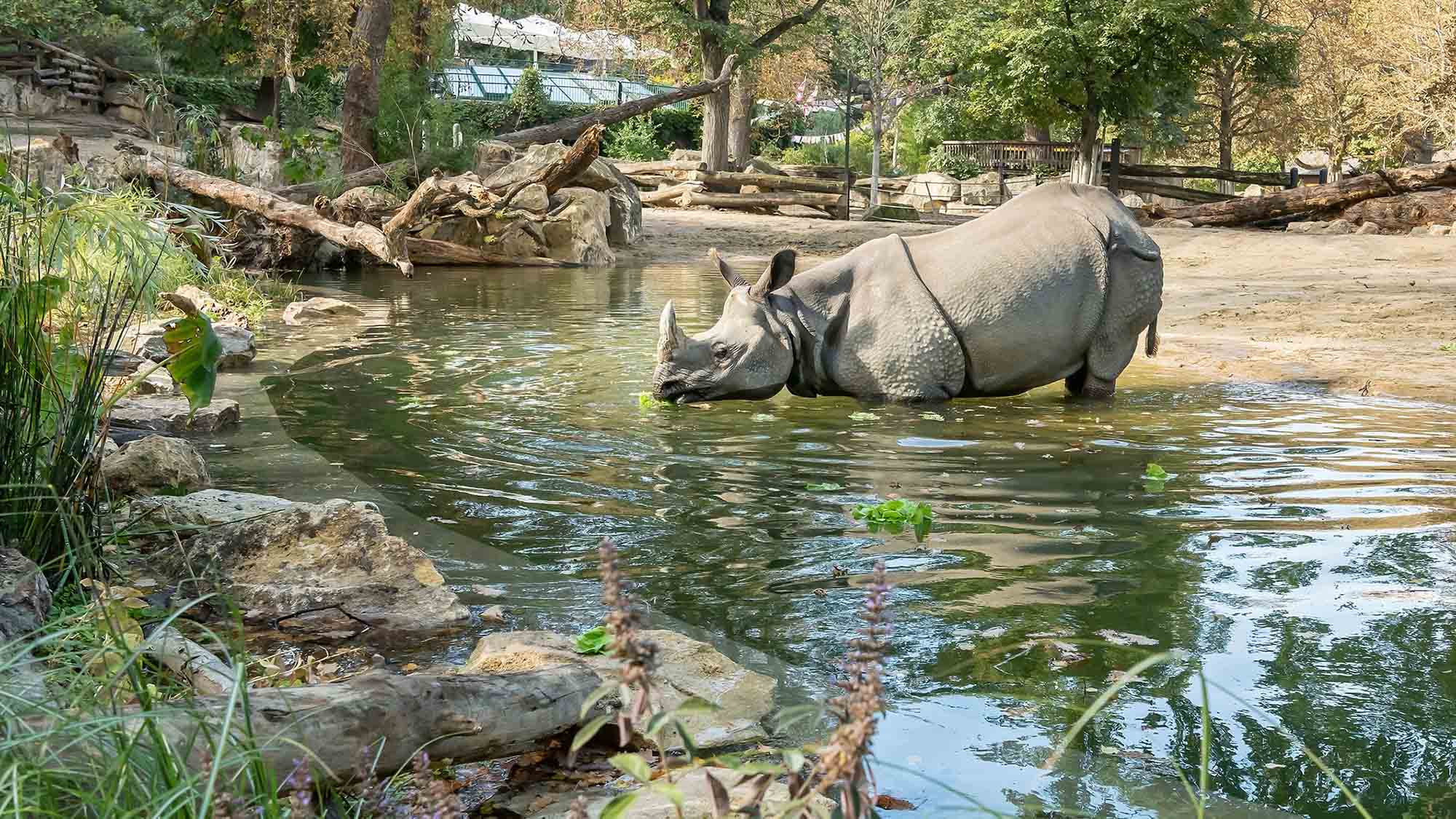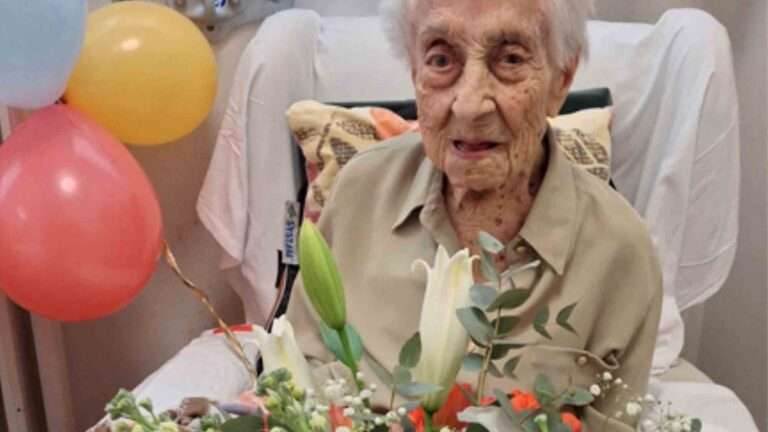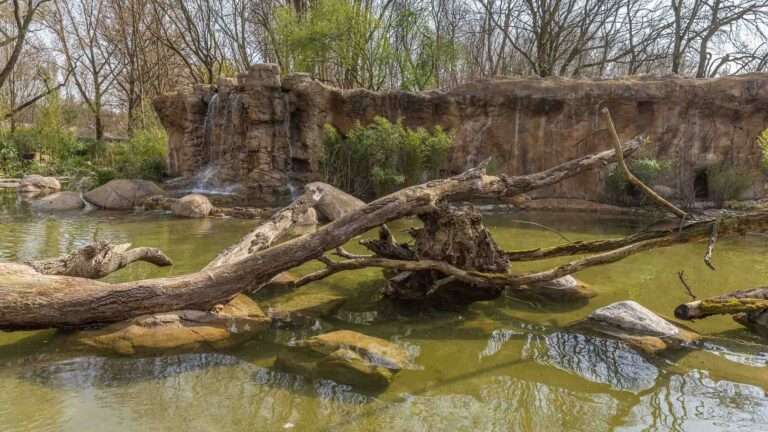A new pond has been set up at Vienna Zoo’s Indian rhino enclosure – to the great delight of its horned inhabitants.
The Viennese zoo is home to Sundari and Jange, two Indian rhinos who were raised by carers at Nepal’s Chitwan National Park after being discovered living without parents.
After several attempts to return the duo – who are not siblings – to the wild had failed, they were transferred to Austria in March 2006 from Nepal as an official present from the Asian country.
Video footage released by the zoo situated in the capital of Austria shows one of them carefully stepping into the waters.
The zoo’s expert Sascha Kummer explained: “Indian rhinos are excellent swimmers. They enjoy taking a dip to cool down and relax.
“They also wallow in the sludge at the water’s edge to keep away insects. It’s good for their skin too.”
Vienna Zoo Director Stephan Hering-Hagenbeck said: “Our aim was to make the rhino enclosure more attractive by installing a pond – not just for the animals but also for our visitors.
“The waters function as a natural barrier. It enables visitors to get more than just a glimpse of our Indian rhinos.”
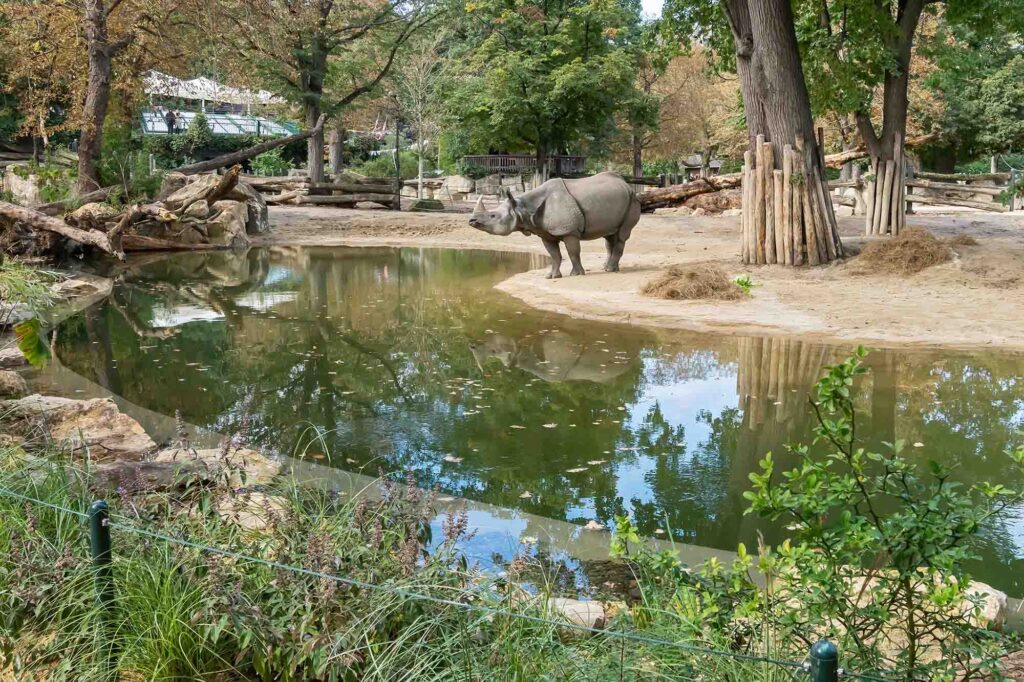
(Daniel Zupanc/Newsflash)
The zoo’s 6,000 square-metre rhino enclosure also features three other Asian species: the sika deer, the nilgai antelope and the blackbuck.
The Indian rhinoceros (Rhinoceros unicornis), is a rhinoceros species native to the Indian subcontinent.
It is listed as Vulnerable on the International Union for Conservation of Nature’s (IUCN) Red List as populations are fragmented and restricted to less than 20,000 square kilometres (7,722 sq mi).
The Indian rhino once ranged across the entire northern part of the Indian Subcontinent from Pakistan to the Indian-Myanmar border, including Bangladesh and the southern parts of Nepal and Bhutan.
Excessive hunting and agricultural projects drastically reduced Indian rhino populations. In the early 1990s, there were just an estimated 1,880 Indian rhinos.
Their numbers have risen again due to conservation measures. Poaching nevertheless poses an existential threat.
Zoo chief Hering-Hagenbeck explained: “The Indian rhino has benefited from extensive protective measures. There are more of them in their natural habitat nowadays.

(Daniel Zupanc/Newsflash)
“Nevertheless, they are still a highly endangered species. Their habitats are restricted to protected areas and zoos.”
Indian rhino bulls weigh around 2,200 kg (4,850 lb) while cows tip the scales at 1,600 kg (3,530 lb).
They have thick grey-brown skin and one horn on their snout. Bulls have huge neck folds.
The Indian rhino’s single horn is present in both bulls and cows, but not on newborn calves. The horn is pure keratin, like human fingernails, and starts to show after about six years.
In most adults, the horn reaches a length of about 25 cm (9.8 in).
Vienna Zoo, or Tiergarten Schoenbrunn, was established by the royal Austrian-Hungarian Habsburg Family in the park of Schoenbrunn Palace, in western Vienna, back in 1752.
Today the institution is the world’s oldest zoo still in operation.
Vienna Zoo contains around 8,000 animals from 700 species on an area of 17 hectares.
The zoo topped British zoologist Anthony Sheridan’s Best European Zoo ranking in 2008, 2010, 2012, 2014 and 2018.
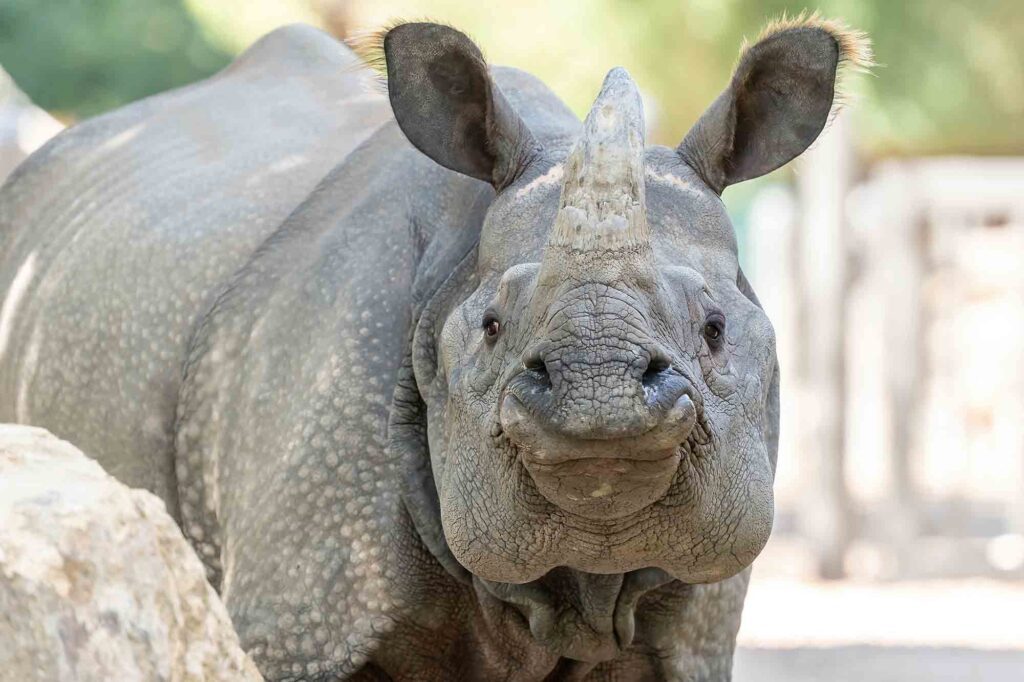
(Daniel Zupanc/Newsflash)
To find out more about the author, editor or agency that supplied this story – please click below.
Story By: Thomas Hochwarter, Sub-Editor: Marija Stojkoska, Agency: Newsflash
The Ananova page is created by and dedicated to professional, independent freelance journalists. It is a place for us to showcase our work. When our news is sold to our media partners, we will include the link here.

